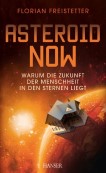Discovery of the Heavy Metal Planet EPIC4823b
Press Release (Eike Guenter, TLS Tautenburg)
For centuries it has been the astronomers Nightwish to study planets orbiting other stars, and to find out how they are. Because our solar system harbours low mass rocky planets like the Mother Earth, and fluffy gas-giants like Jupiter it was expected that planets orbiting other stars would also resemble the types of planets. However, as Life Is Often Stranger Than Fiction, planets orbiting other stars are often very different from the planets in our solar system. A new study has now unveiled a particularly strange example which shows how weird planets can be.
The planetary system EPIC4823:
Using telescopes located far away from Europe’s April Rain, an international team of astronomers now has discovered a system containing two planets in the constellation of Pisces. This system is known as EPIC 220674823, or EPIC4823 for short, and it is not 10,000,000 Light Years away but only 800.
The most important parameter that characterizes the planet is its density. Determining the density of a planet thus is the astronomers Call of Destiny, because it allows to find out what their composition is. To measure the densities of The Worlds, astronomers Take Controlled experiments in the form that they determine the mass and radius of the planet. Up to now, all known low-mass planets have about the same composition as the Earth, a rocky planet with a small metal core but this planet is different. It has 1.5 times the size of Mother Earth but amazingly 8 times its mass. The density thus is astonishingly 13 gcm-3, which means that the metalcore of the planet contains 80% of its mass. This planet thus can certainly be called the Heavy Metal Planet.
A year of this planets last only for 14 hours, and the side facing the star is as hot as a Dragon Kiss: 2000°C. The surface on that side must be molten, possibly creating a giant volcano. In contrast to this, on the rear side it is as Black As Infinity and cold. Despite the low temperature, it is not Frozen and ruled by an Ice-Queen, as there is no water on this planet. There is presumably also no atmosphere like ours, because such an atmosphere would have been Lost within a short time due to the intense XrAy anND uv RadIAtion (XUV radiation) from the star. This planet is certainly not a Paradise but it should better be called Planet Hell.
The orbital period of the other planet is 13 days and is 2.5 times larger and 6 times heavier than Earth. Being so close to the star, both planets are thus not Canvas of Live. This not a Tragedy Of The Cosmos as there are potentially many others that can harbour live, and these ones are interesting because they tell us how planets form.
The Formation of Planets:
The formation of planets is a natural by-product of the formation of stars. Young stars are surrounded by circumstellar disks. Like The King, the star sits in the middle of the system, accreting most of the matter from the disk. But the matter from the disk is not directly flowing to the star, as there is a small gap between the star and the disk. Matter thus accumulates at the inner edge of the disk, eventually forming giant Arches through which the matter flows most of the time from the disk to the star, unless the Arches Unleash, which they occasionally also do. In any case, these Arches are the friends, not Enemies of star-formation.
The disks not only contain gas but also Amorphous as well as crystalline dust. This Stardust is the seed of planet formation. The fact that the inner planet of this system, EPIC4823b, is so metal rich shows that it has formed close to the inner edge of the disk. Testing the Metal contents of this planet thus unveils were this planet has formed.
Planet hell:
A molten crust, a temperature of 2000°C on the front side and rear side where it Stay(s) Forever dark certainly qualifies for Planet Hell. If this planet is hell, then we can answer the question how loud it is in hell. At first glance, one might think that there are no sound waves on a planet that does not have an atmosphere. However, this is not true, since the planet orbits essentially in the corona of the star, which is at least partly heated by acoustic waves. The frequencies are much lower than what we can hear but the acoustic flux is indeed very high: 170000 Wm-2 inside a magnetic flux-tube on the star. However, on the surface of the planet the acoustic flux is much reduced, it is typically not much higher than 20 W m-2. The advertisement “louder then hell” by a famous music festival in northern Germany thus turns out to be not just a gag from a marketing company but a scientifically correct statement.











Letzte Kommentare